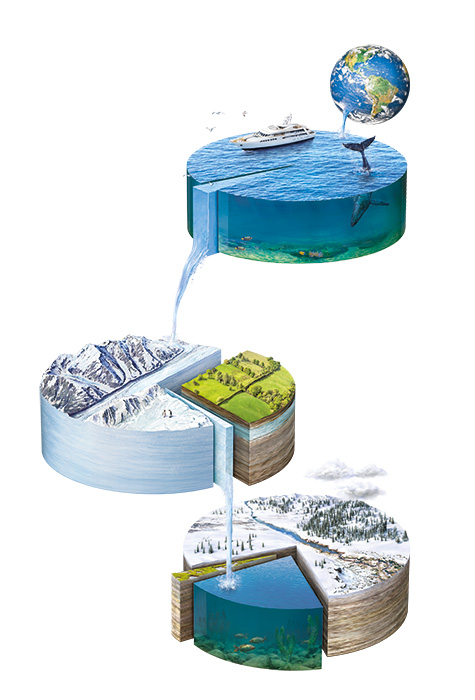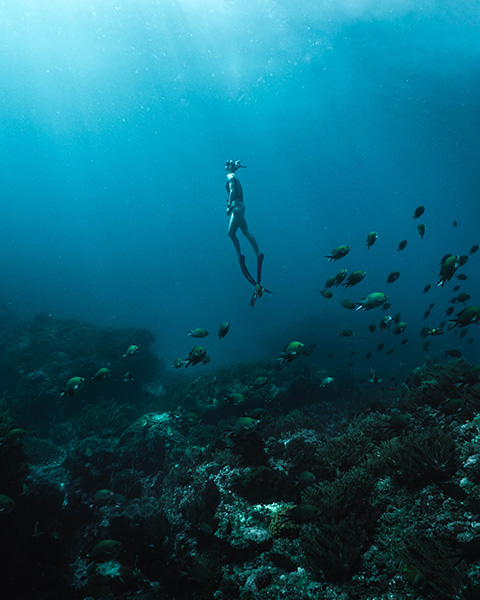A world of colours
Blue is the colour that guarantees our survival.
Magnificent oceans, flowing rivers, rain and snow falling from the sky - water is a treasure we experience (and sometimes abuse) every day.
Taking many different forms, it exists in our lives, in our blood, and in the air we breathe.
Our own body is majorly composed by water (a staggering 60% of our body and 90% of our blood) pivoting around a tiny but life-changing chemical formula: H2O. You might be surprised to hear that most freshwater, however, is locked away under the Earth's surface or exists in non-liquid forms.
In fact, more than two-thirds of freshwater available on our planet are frozen in ice caps and glaciers.





